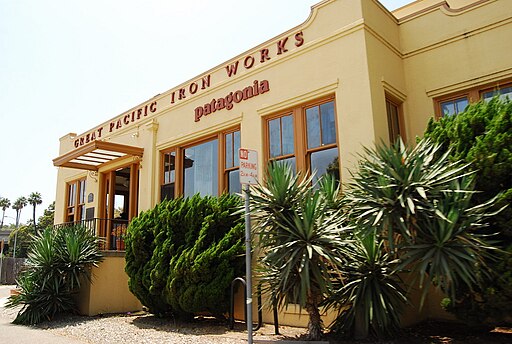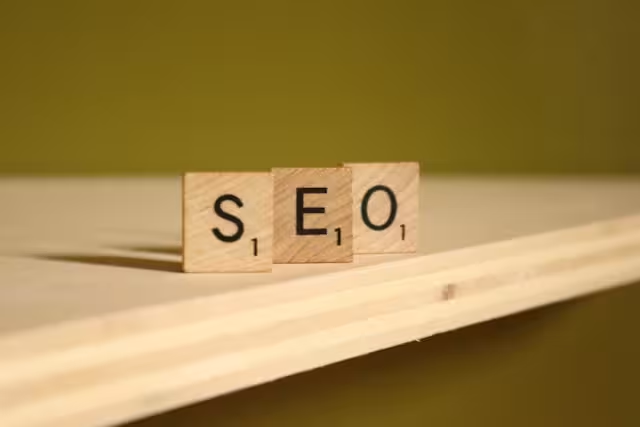What if a website could feel like a walk in the woods or a breath of fresh air? This question moves beyond mere aesthetics into the functional core of user engagement. Biophilic design is more than a visual trend; it’s a potent tool for effective storytelling. This article will demonstrate how integrating biophilic principles into web design creates deeply engaging and persuasive narratives that resonate with our innate connection to the natural world. This concept, which can be termed “Digital Biophilia,” is a design philosophy that enhances user experience by tapping into our inherent affinity for nature, thereby making digital storytelling more impactful and memorable (sustainability-directory – digital biophilia).
Table of Contents
What is Biophilic Web Design? A Primer

Biophilic design is a framework that systematically incorporates nature into the built environment. In the digital space, this translates to creating websites that tap into our innate human affinity for the natural world. This isn’t merely about adding a plant image to a webpage; it’s a comprehensive approach rooted in established principles that enhance user experience on a subconscious level. The theory, popularized by the biologist Edward O. Wilson, posits that our connection to nature is a biological imperative. Integrating this into web design is a matter of technical execution and environmental psychology.
The core principles can be categorized as follows:
- Direct Experience of Nature: This is the most literal application. In web design, it involves the integration of dynamic, high-quality representations of nature. This includes elements like video backgrounds of flowing water or shifting clouds, ambient soundscapes of a forest or rainfall, and the strategic use of light and shadow in the design layout to mimic natural sunlight. The goal is to create a multisensory, albeit digital, experience of nature.
- Indirect Experience of Nature: This involves the use of representations that evoke nature. We can achieve this through the use of natural materials and textures, such as digital interfaces that incorporate the visual grain of wood or the subtle texture of stone. Color palettes are derived from earthy, botanical, or aquatic tones. Furthermore, this principle includes the use of organic shapes and patterns that mimic those found in nature—such as hexagonal honeycomb patterns or the fractal branching of trees—rather than rigid, geometric grids.
- Experience of Space and Place: This principle is more complex and deals with how we perceive a digital space. It involves creating a sense of prospect and refuge, where a user has a clear view of the navigation and content (prospect) while also feeling a sense of comfort and security within the page layout (refuge). We can also introduce elements of mystery and risk through interactive features that encourage exploration and discovery, guiding the user along a path that unfolds over time, much like exploring a trail in a forest.
By leveraging these principles, we move beyond simple aesthetics to create a more human-centered design that is both engaging and restorative for the user.
The Power of Storytelling in Web Design

Effective web design transcends the mere presentation of information; it crafts a narrative. Narrative web design is the strategic use of storytelling to connect with users on an emotional level, build brand trust, and guide them toward a specific action. When a user lands on a website, they aren’t just looking for data; they are looking for a solution, a connection, or an experience. A well-told story provides that context and meaning.
The power of this approach lies in its ability to foster genuine user engagement. Stories evoke emotions, and emotional design is a critical factor in decision-making. A website that tells a compelling story—whether it’s the origin of the brand, the journey of a product’s creation, or the impact of a service—creates a memorable experience that resonates far longer than a list of features. This is fundamental to brand storytelling, as it communicates core values and builds a loyal community around a shared narrative.
In practice, we can adapt classic narrative structures for digital spaces. The “hero’s journey,” for example, can frame the user as the hero, with the brand or product acting as the mentor or magical tool that helps them overcome a challenge. This journey is reflected in the user flow, from the landing page (the call to adventure) to the contact form or checkout page (the ultimate reward). Ultimately, a strong narrative is a key driver of conversion optimization, as it provides the “why” that motivates a user to click, subscribe, or purchase.
Where Nature Meets Narrative: Biophilic Web Design Examples for Storytelling

The true potential of this design philosophy is realized when biophilic principles are woven into a compelling narrative. Here, we analyze how different types of websites can achieve this synergy. This directly addresses the common question, How can I incorporate biophilic design into my website?
- Example 1: The E-commerce Experience as a Natural Journey – A brand like Patagonia excels here. Their website tells a story not just about apparel, but about a commitment to environmentalism and adventure. The biophilic elements are evident in the stunning, authentic imagery of their products being used in wild, natural settings. The color palette is earthy and grounded. The storytelling frames the customer’s purchase as part of a larger narrative of conservation and outdoor exploration. The user journey mimics a path of discovery, where one learns about the product’s sustainable materials and the brand’s activism before making a purchase.
- Example 2: The Corporate Website as a Thriving Ecosystem – Consider a company in the wellness or sustainability sector. Their website’s narrative is one of growth, health, and interconnectedness. This is supported by biophilic elements like organic shapes and flowing lines in the layout, replacing sharp, corporate angles. Animations might mimic the gentle sway of leaves or the ripple of water. The story being told is that the company operates like a healthy ecosystem—balanced, growing, and beneficial to all its parts. This approach powerfully communicates a brand’s holistic mission.
- Example 3: The Portfolio as a Digital Landscape – For a nature photographer or environmental artist, the portfolio itself becomes the story. The biophilic design is paramount, often featuring a minimalist user interface that prioritizes the artwork. Full-screen video backgrounds of serene landscapes or immersive parallax scrolling effects can create a sense of depth and place. The storytelling is the artist’s personal journey and their relationship with the natural world, with each gallery or project representing a different chapter or a new “vista” to be explored.
- Example 4: The Non-Profit Website as a Call to Action from the Wild – Environmental non-profits must evoke a strong emotional response to drive action. Their websites use biophilic elements to create an immediate, visceral connection to their cause. This includes powerful, emotive imagery of the habitats they protect and the species they defend. The strategic use of soundscapes—such as birdsong or whale calls—can further immerse the user. The narrative is one of urgency and hope. By using biophilic design to make the natural world feel present and tangible, they make the threat to it more immediate and the call to donate or get involved more persuasive.
The primary benefit of biophilic web design, demonstrated across all these examples, is its ability to create a deeper, more meaningful connection with the user, leading to increased engagement and brand loyalty.
Key Elements for Weaving Your Own Biophilic Narrative

Implementing a biophilic storytelling approach requires a technical and artistic focus on several key elements. Success is found in the subtle, cohesive integration of these components.
- Imagery and Videography: This is the most direct way to bring nature into your design. Use high-resolution, authentic, and emotionally resonant visuals. Avoid generic stock photos. Platforms like Unsplash or Adobe Stock can be useful sources, but original content is always superior. The goal is for the imagery to support the narrative, not just decorate the page.
- Color and Texture: Develop a color palette inspired by a specific natural environment relevant to your brand’s story—a forest, a desert, a coastline. Use these colors to create a cohesive atmosphere. Subtle background textures that mimic wood, paper, or stone can add tactile depth and a sense of grounding to the digital interface.
- Typography: Choose fonts that feel more organic and less mechanical. Serif fonts can evoke a classic, natural feel, while some sans-serif fonts with gentle curves can feel modern yet approachable. The key is legibility and ensuring the typography complements the overall naturalistic aesthetic.
- Layout and White Space: Use negative space (or “white space”) generously. This creates a sense of calm, focus, and breathability, akin to an open landscape. Avoid cluttered layouts. Guide the user’s eye naturally through the page with flowing lines and an intuitive visual hierarchy.
- Animation and Micro-interactions: Use subtle animations to mimic natural movement. This can be achieved with CSS animations or JavaScript libraries. Think of buttons that gently ripple when clicked, menus that unfold like a leaf, or loading icons that pulse like a gentle heartbeat. These small details significantly enhance the feeling of a living, responsive environment.
The SEO Benefits of Biophilic Storytelling

While the primary goal is user experience, a biophilic storytelling approach yields significant and direct SEO benefits. Search engines are increasingly prioritizing user engagement signals to rank pages. A website that successfully implements these principles will naturally perform better.
- Increased Dwell Time and Engagement: An immersive, narrative-driven experience captivates users, keeping them on the page and on the site for longer. This increased dwell time is a powerful signal to Google that your content is valuable and relevant to the user’s query.
- Lower Bounce Rates: A compelling story and an inviting design encourage users to click through to other pages rather than “bouncing” back to the search results. They are motivated to follow the narrative path you have created, which improves site-wide engagement metrics.
- Enhanced Brand Perception and Trust: While not a direct ranking factor, trust is a cornerstone of user experience and conversions. A well-designed, story-driven site builds credibility and a positive brand association, which can lead to more backlinks and positive social mentions over time.
- Semantic SEO: By building a site that holistically covers a topic through storytelling, you naturally incorporate a wide range of semantically related keywords and concepts. The article you create is not just optimized for a single keyword but becomes a comprehensive resource. This depth and breadth are exactly what search engines look for when determining topical authority.
Conclusion: The Future of Web Design is in Our Nature
In summary, the integration of biophilic design and storytelling is not a fleeting trend but an evolution in creating more effective, humane, and memorable digital experiences. It moves us away from sterile, functional interfaces and toward websites that engage our senses, resonate with our emotions, and tap into a biological connection that is fundamental to who we are. The result is a website that doesn’t just provide information but tells a compelling story, building a bridge between the brand and the user on a deeply human level.
I encourage you to look at your own digital projects and ask: How can I weave a more natural narrative? How can I create a space that feels less like a machine and more like a living environment? The future of web design lies in answering these questions. By doing so, we have the opportunity to create a digital world that is not only more beautiful and engaging but also more aligned with our own nature.